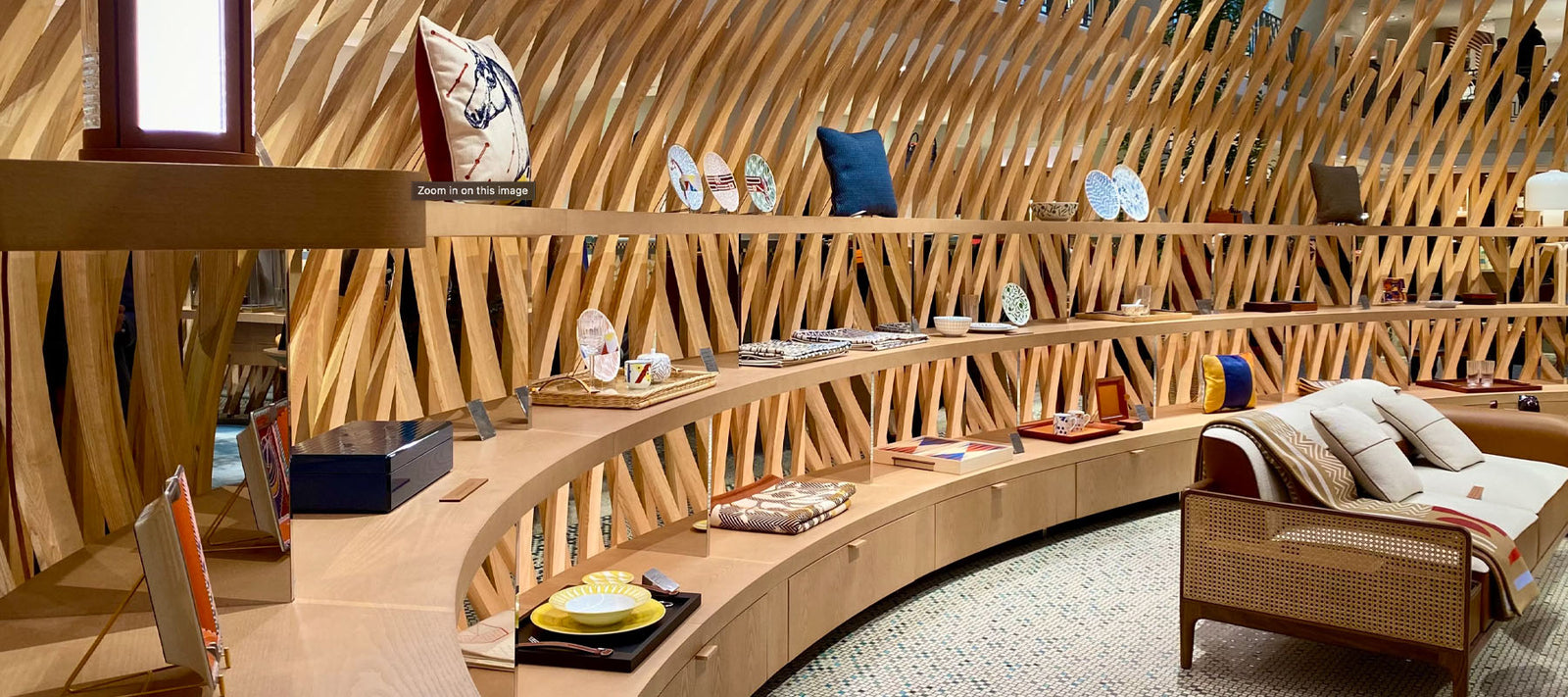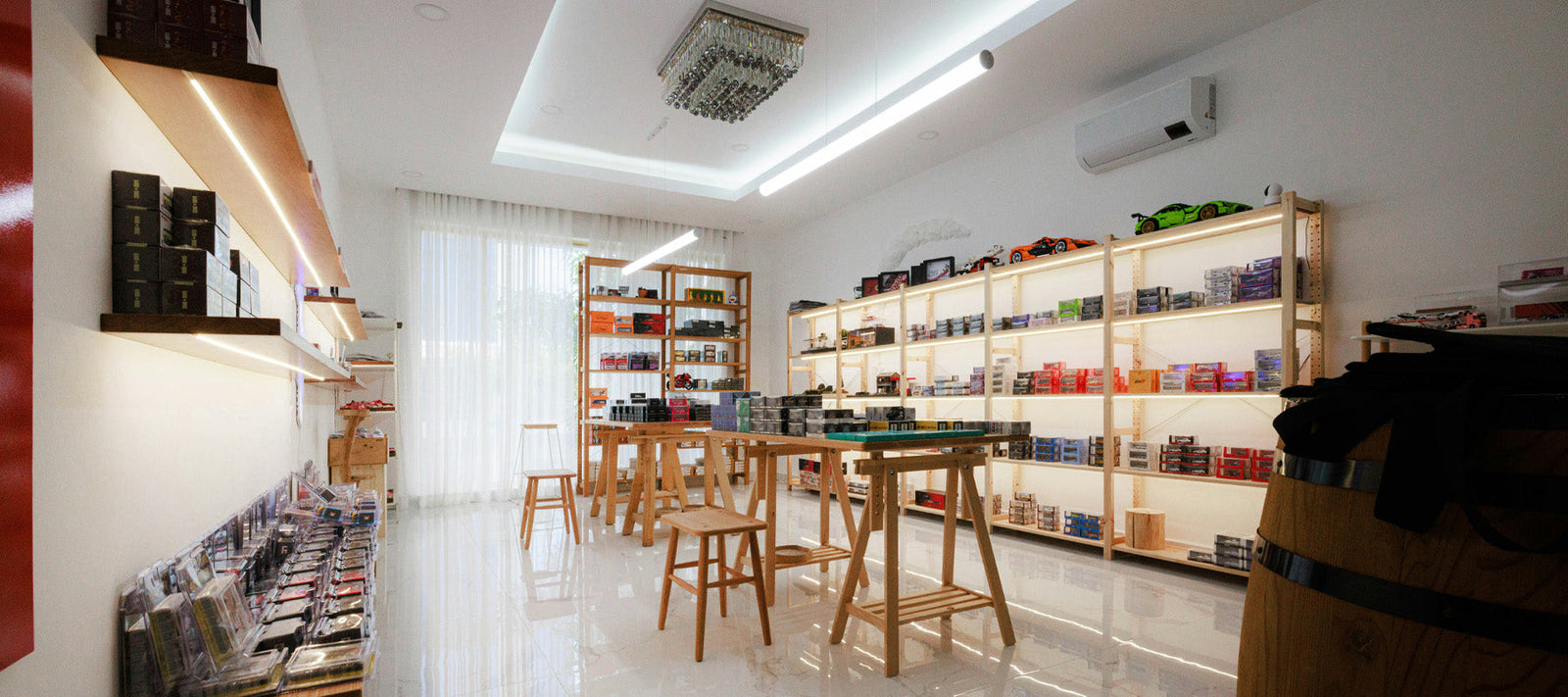In an era marked by growing environmental concerns and a heightened focus on sustainability, businesses across industries are reevaluating their practices to minimise their ecological footprint. Retail, as a significant contributor to consumer culture, has a pivotal role to play in this movement. In this blog post, we'll explore the importance of incorporating sustainability into Point of Sale (POS) design, highlighting eco-friendly materials and practices that can help retailers create greener, more environmentally responsible retail spaces.
The Imperative of Sustainable Retail
As awareness of environmental issues continues to rise, consumers are increasingly drawn to brands that prioritise sustainability and environmental responsibility. From reducing waste to minimising energy consumption, businesses are under pressure to adopt more eco-friendly practices. For retailers, this extends to every aspect of the shopping experience, including the design of POS displays and fixtures.
Why Sustainability Matters in Retail POS Design:
1. Reducing Environmental Impact:
The retail industry is notorious for its environmental impact, from the production and transportation of goods to the disposal of packaging and displays. By incorporating sustainable practices into POS design, retailers can significantly reduce their carbon footprint and contribute to a healthier planet.
2. Meeting Consumer Expectations:
Today's consumers are more environmentally conscious than ever before, and they expect the brands they support to share their values. By embracing sustainability in POS design, retailers can demonstrate their commitment to environmental stewardship and appeal to eco-conscious consumers.
3. Enhancing Brand Image:
Sustainability has become a key differentiator in the retail landscape, with eco-friendly brands often enjoying a competitive advantage. By incorporating sustainable elements into POS design, retailers can enhance their brand image and position themselves as leaders in corporate social responsibility.
Incorporating Eco-Friendly Materials into POS Design:
1. Recycled and Upcycled Materials:
One of the most straightforward ways to make POS design more sustainable is by using recycled or upcycled materials. From cardboard and paperboard to reclaimed wood and metal, there are numerous eco-friendly options available for creating displays and fixtures.
2. Biodegradable Materials:
Biodegradable materials, such as PLA (polylactic acid) plastics and plant-based fibers, offer an environmentally friendly alternative to traditional plastics. These materials break down naturally over time, reducing the environmental impact of POS displays and packaging.
3. Sustainable Fabrics:
Fabrics made from sustainable materials, such as organic cotton, hemp, and bamboo, can be used to create soft signage, banners, and drapes for POS displays. These materials are not only eco-friendly but also add a touch of texture and warmth to retail spaces.
Practices for Sustainable POS Design:
1. Modular and Reusable Designs:
Designing POS displays that are modular and reusable allows retailers to adapt them for different promotions and seasons, reducing the need for constant production of new displays. Modular designs also make it easier to disassemble and recycle components at the end of their lifecycle.
2. Energy-Efficient Lighting:
LED lighting consumes significantly less energy than traditional lighting sources and has a longer lifespan, making it an eco-friendly choice for illuminating POS displays. Solar-powered lighting options further reduce energy consumption and reliance on non-renewable resources.
3. Minimalist Design Aesthetics:
Embracing a minimalist design aesthetic not only creates a clean and modern look but also reduces material waste and resource consumption. By focusing on essential elements and eliminating unnecessary embellishments, retailers can create visually striking POS displays that are also environmentally responsible.
Case Studies in Sustainable POS Design:
1. Patagonia:
Outdoor apparel retailer Patagonia is known for its commitment to sustainability, which extends to its retail stores. Patagonia's POS displays are made from recycled and upcycled materials, reflecting the brand's ethos of environmental responsibility.
2. IKEA:
IKEA is a leader in sustainable retail design, with a focus on minimising waste and maximising resource efficiency. The company's POS displays are often constructed from sustainable materials such as FSC-certified wood and bamboo, and they are designed to be modular and reusable.
Challenges and Opportunities in Sustainable POS Design:
1. Cost Considerations:
While incorporating sustainable materials and practices into POS design may entail higher upfront costs, the long-term benefits in terms of brand image and environmental impact often outweigh the initial investment.
2. Education and Awareness:
Many retailers may be unaware of the sustainability options available for POS design or may be hesitant to adopt them due to a lack of understanding or perceived complexity. Educating retailers about the benefits of sustainable POS design and providing resources and guidance can help overcome these barriers.
Shaping a Greener Future for Retail POS Design
Incorporating sustainability into POS design is not just a trend—it's a necessity. By choosing eco-friendly materials, embracing sustainable practices, and prioritising environmental responsibility, retailers can create retail spaces that not only attract customers but also contribute to a more sustainable future for our planet. From recycled cardboard displays to energy-efficient lighting solutions, the options for sustainable POS design are endless. By taking proactive steps to green their retail spaces, retailers can lead by example and inspire others to follow suit, ultimately driving positive change across the entire industry.
The Imperative of Sustainable Retail
As awareness of environmental issues continues to rise, consumers are increasingly drawn to brands that prioritise sustainability and environmental responsibility. From reducing waste to minimising energy consumption, businesses are under pressure to adopt more eco-friendly practices. For retailers, this extends to every aspect of the shopping experience, including the design of POS displays and fixtures.
Why Sustainability Matters in Retail POS Design:
1. Reducing Environmental Impact:
The retail industry is notorious for its environmental impact, from the production and transportation of goods to the disposal of packaging and displays. By incorporating sustainable practices into POS design, retailers can significantly reduce their carbon footprint and contribute to a healthier planet.
2. Meeting Consumer Expectations:
Today's consumers are more environmentally conscious than ever before, and they expect the brands they support to share their values. By embracing sustainability in POS design, retailers can demonstrate their commitment to environmental stewardship and appeal to eco-conscious consumers.
3. Enhancing Brand Image:
Sustainability has become a key differentiator in the retail landscape, with eco-friendly brands often enjoying a competitive advantage. By incorporating sustainable elements into POS design, retailers can enhance their brand image and position themselves as leaders in corporate social responsibility.
Incorporating Eco-Friendly Materials into POS Design:
1. Recycled and Upcycled Materials:
One of the most straightforward ways to make POS design more sustainable is by using recycled or upcycled materials. From cardboard and paperboard to reclaimed wood and metal, there are numerous eco-friendly options available for creating displays and fixtures.
2. Biodegradable Materials:
Biodegradable materials, such as PLA (polylactic acid) plastics and plant-based fibers, offer an environmentally friendly alternative to traditional plastics. These materials break down naturally over time, reducing the environmental impact of POS displays and packaging.
3. Sustainable Fabrics:
Fabrics made from sustainable materials, such as organic cotton, hemp, and bamboo, can be used to create soft signage, banners, and drapes for POS displays. These materials are not only eco-friendly but also add a touch of texture and warmth to retail spaces.
Practices for Sustainable POS Design:
1. Modular and Reusable Designs:
Designing POS displays that are modular and reusable allows retailers to adapt them for different promotions and seasons, reducing the need for constant production of new displays. Modular designs also make it easier to disassemble and recycle components at the end of their lifecycle.
2. Energy-Efficient Lighting:
LED lighting consumes significantly less energy than traditional lighting sources and has a longer lifespan, making it an eco-friendly choice for illuminating POS displays. Solar-powered lighting options further reduce energy consumption and reliance on non-renewable resources.
3. Minimalist Design Aesthetics:
Embracing a minimalist design aesthetic not only creates a clean and modern look but also reduces material waste and resource consumption. By focusing on essential elements and eliminating unnecessary embellishments, retailers can create visually striking POS displays that are also environmentally responsible.
Case Studies in Sustainable POS Design:
1. Patagonia:
Outdoor apparel retailer Patagonia is known for its commitment to sustainability, which extends to its retail stores. Patagonia's POS displays are made from recycled and upcycled materials, reflecting the brand's ethos of environmental responsibility.
2. IKEA:
IKEA is a leader in sustainable retail design, with a focus on minimising waste and maximising resource efficiency. The company's POS displays are often constructed from sustainable materials such as FSC-certified wood and bamboo, and they are designed to be modular and reusable.
Challenges and Opportunities in Sustainable POS Design:
1. Cost Considerations:
While incorporating sustainable materials and practices into POS design may entail higher upfront costs, the long-term benefits in terms of brand image and environmental impact often outweigh the initial investment.
2. Education and Awareness:
Many retailers may be unaware of the sustainability options available for POS design or may be hesitant to adopt them due to a lack of understanding or perceived complexity. Educating retailers about the benefits of sustainable POS design and providing resources and guidance can help overcome these barriers.
Shaping a Greener Future for Retail POS Design
Incorporating sustainability into POS design is not just a trend—it's a necessity. By choosing eco-friendly materials, embracing sustainable practices, and prioritising environmental responsibility, retailers can create retail spaces that not only attract customers but also contribute to a more sustainable future for our planet. From recycled cardboard displays to energy-efficient lighting solutions, the options for sustainable POS design are endless. By taking proactive steps to green their retail spaces, retailers can lead by example and inspire others to follow suit, ultimately driving positive change across the entire industry.






